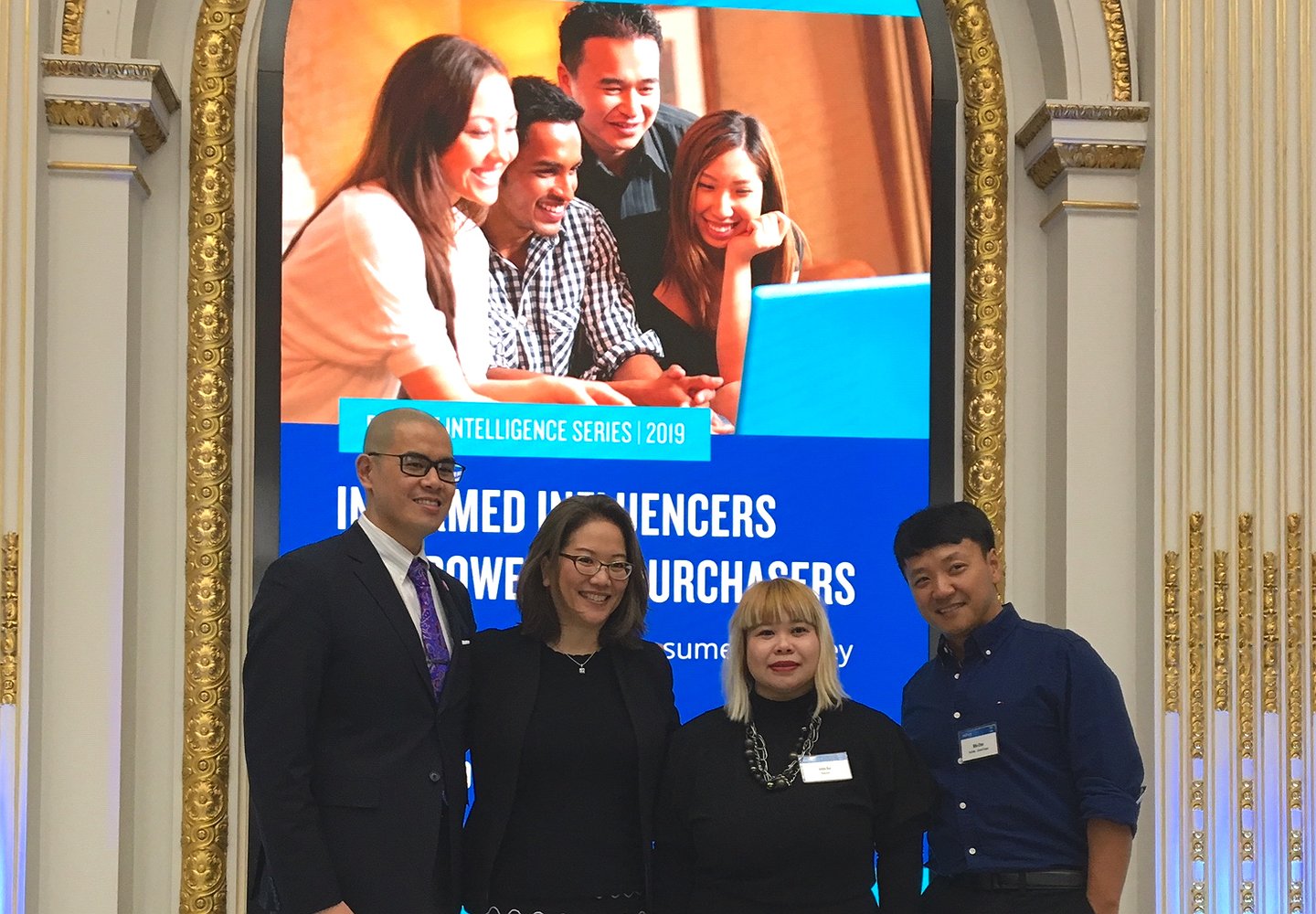 Asian American consumers "are part of this country today
and in the future," stated Mariko Carpenter, Nielsen's Vice President of
Strategic Community Alliance as she presented the findings of the
latest Nielsen annual Asian American study.
Taking place during Asian Pacific American Heritage month, this is the
seventh year that of the study, but was presented to the industry in New
York versus Los Angeles for the first time.
Asian American consumers "are part of this country today
and in the future," stated Mariko Carpenter, Nielsen's Vice President of
Strategic Community Alliance as she presented the findings of the
latest Nielsen annual Asian American study.
Taking place during Asian Pacific American Heritage month, this is the
seventh year that of the study, but was presented to the industry in New
York versus Los Angeles for the first time.The power of Asian American consumers is profound. "We are voting with our wallet, time and voice," Carpenter said. "We are no longer 'the other.' Brands are embracing the diversity." The study found that today's path to purchase is no longer linear with a range of device and platform options to guide the consideration journey.
In addition to being an especially well educated, wealthy and highly employed population, Nielsen reported three major trends in the Asian American community that set them apart from other ethnic groups:
- Family is a key influencer. Asian households are multi-generational with 27% living with that household composition compared to 15% of the general population. Asian households are +17% larger than average (averaging 2.91 persons vs 2.49 for the total population). Extended families, some just starting life in the U.S., account for some of the higher household income. But these homes also tend to have more married couples (63% vs. 48%) and children (40% vs. 31%). All of this contributes to purchasing patterns that are often dissimilar to other groups. Across a variety of consumer categories, the intended user of products purchased for Asian households is often not the primary shopper (98 index), but is instead for children (134), a spouse/partner (120) or other household members (120).
- Digital is the key to entry. Asian consumers learn about new products from digital ads and are the most digitally connected consumer segment. Ninety-seven percent own a smartphone, 81% own at least one device connected to SVOD and 94% have an internet connection. They spend more time on their smartphone (84%) than viewing linear TV (70%). Through all of this, social media plays an integral role fostered by such mega apps as WeChat from China. Nielsen found that 30% of smartphone time is on WeChat where a range of interactions are possible from buying products, streaming music, curating photos and transferring money all in one app environment.
- Shopping is a reimagined experience. Asian Americans are the fastest growing ethnic group population-wise with buying power of $1 trillion. This is the equivalent of the 17th largest GPD in the world -- larger than Switzerland and Turkey. "We are small in size, but we have significant buying power," Carpenter noted. Asian Americans are shifting from offline to online transactions at a higher rate and have a higher spend than the general population. Eighty-seven percent made an online purchase in the past twelve months. They are also early adopters of online grocery shopping (22% in the past 12 months) and are great e-sports fans (49%). In fact, 63% say that they are more loyal to businesses that sponsor their events. "Asians are leaning in now," Carpenter explained. "We are becoming significantly influential." She added that advertisers need to understand that human story is a key to connection. "Reaching Asians on digital has to be thoughtful," she noted.
This article first appeared in www.MediaVillage.com
No comments:
Post a Comment